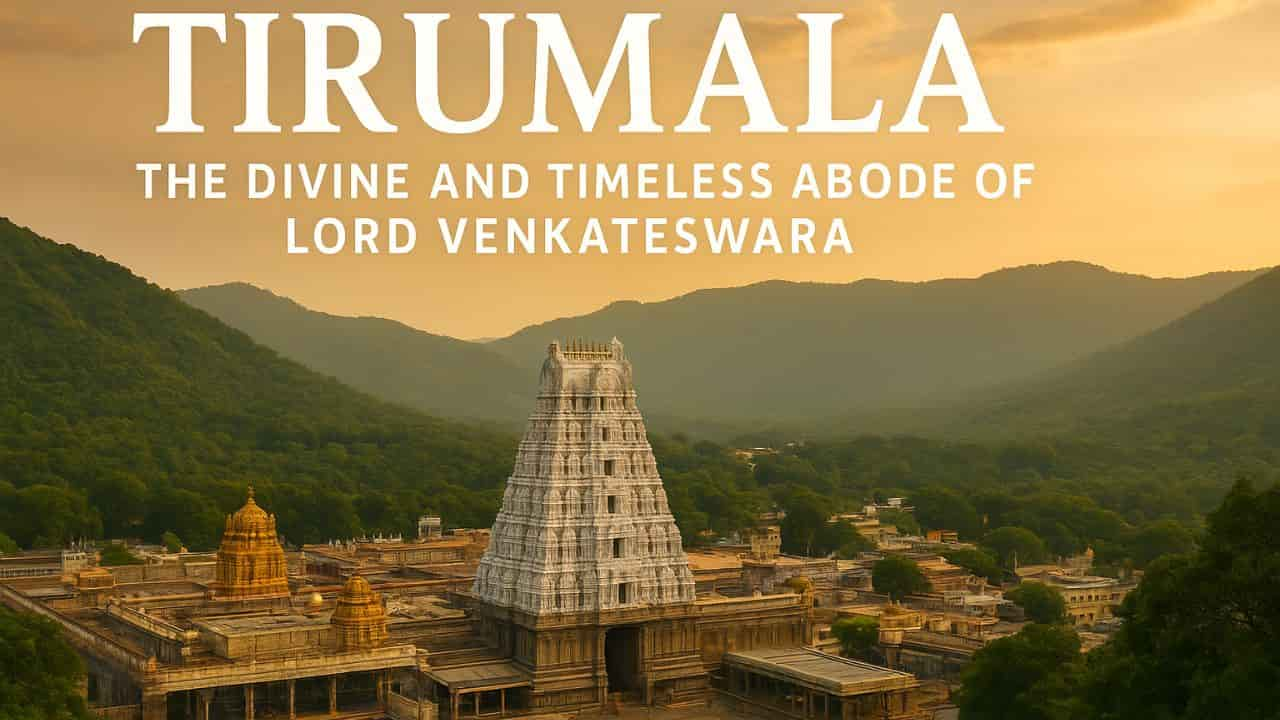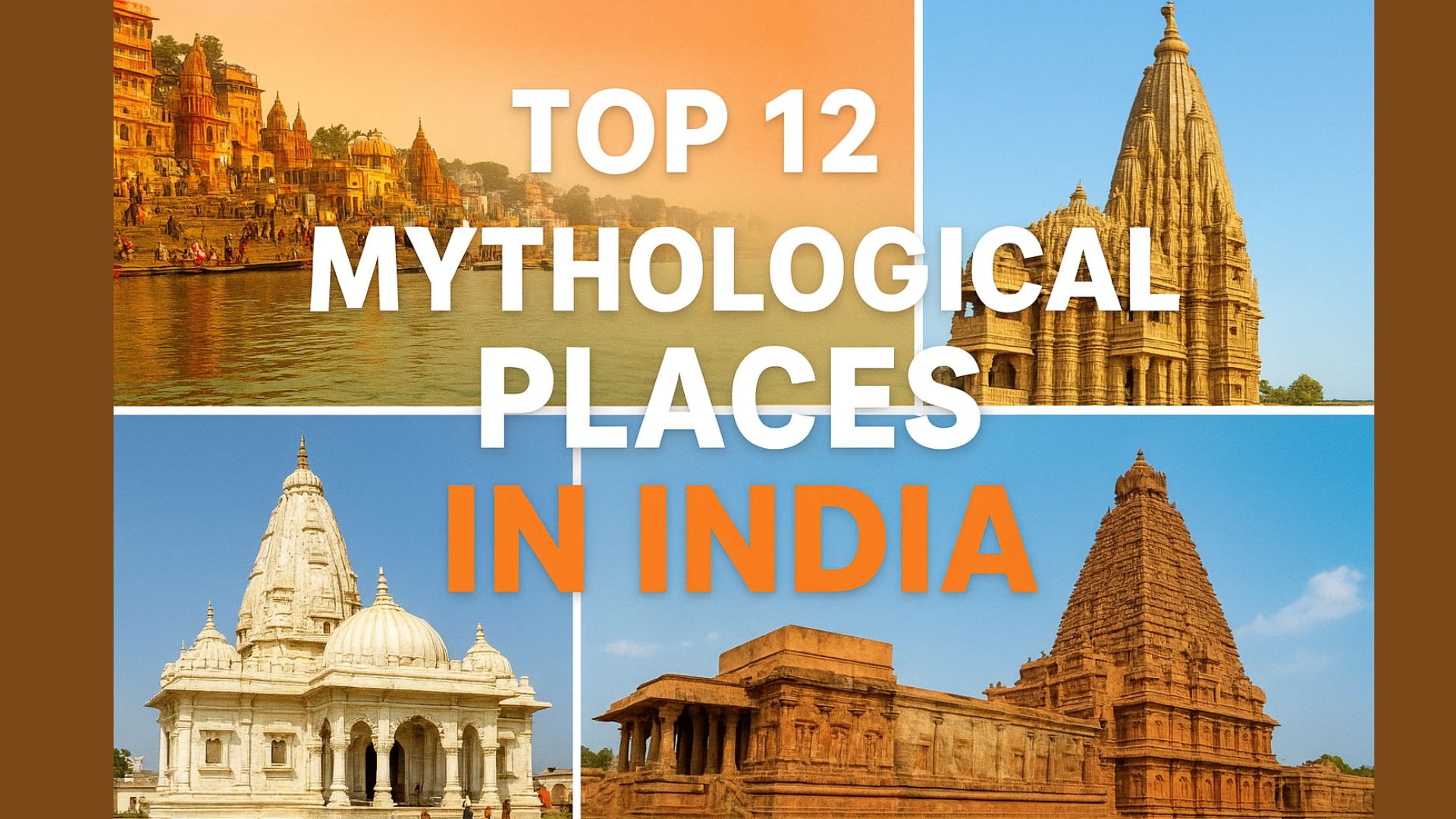
Nestled in the lush Seshachalam hills of Andhra Pradesh, Tirumala stands as one of the most sacred pilgrimage sites in India. Home to the world-famous Sri Venkateswara Temple, this divine hill town is revered as the abode of Lord Vishnu’s incarnation, Lord Venkateswara, also known as Balaji or Srinivasa. Every year, millions of devotees from across the globe ascend these holy hills with hearts filled with faith, carrying offerings and prayers that echo through the ages.
Tirumala is not just a spiritual destination; it is a place where devotion, legends, history, and divine energy converge in their purest form. Tirumala epitomizes the Hindu concept of bhakti (devotion) with its serene hills, lovely woods, and the Lord’s heavenly presence.
The Sacred Geography of Tirumala
Tirumala literally means “holy hill.” This set of seven hills is said to represent the seven heads of Adisesha, Lord Vishnu’s celestial serpent. The seven hills are named Seshadri, Neeladri, Garudadri, Anjanadri, Vrishabhadri, Narayanadri, and Venkatadri, with the Venkateswara Temple perched atop the Venkatadri hill.
This geographical symbolism adds layers of spiritual meaning, as every step taken by pilgrims is believed to bring them closer to moksha (liberation). The journey to the temple itself is seen as a spiritual ascent, where body, mind, and soul unite in devotion.
Tirumala and the Sri Venkateswara Temple
At the heart of Tirumala lies the Sri Venkateswara Temple, a shrine that is not only one of the richest temples in the world but also one of the most visited. The deity, Lord Venkateswara, is believed to be the savior of mankind in the Kali Yuga, offering blessings, prosperity, and protection to all who seek Him.
The temple’s golden gopuram glimmers against the backdrop of the hills, and the sanctum sanctorum (Garbhagriha) radiates a divine aura. Devotees often describe their first darshan (glimpse) of the Lord as a moment that transcends words, an experience that fills the heart with unshakable peace and reverence.
The Legend of Tirumala
The story of Tirumala is deeply rooted in mythology. According to the Varaha Purana and other scriptures, Lord Vishnu descended to Earth as Venkateswara to save humanity from the trials of Kali Yuga. The legend tells us of His eternal abode on Venkatadri hill, where He awaits His devotees’ prayers.
In one account, Lord Vishnu descended to Earth to accompany Goddess Lakshmi after she left Vaikuntha due to a disagreement between them. In His search for her, He resided on the hills of Tirumala. Later, Goddess Lakshmi reconciled with Him, and together they are worshipped in eternal union.
Every part of Tirumala is a cherished site because of these centuries-old stories that bring the town and temple to life.
The Divine Rituals and Offerings
A special aspect of Tirumala is its daily rituals, which have been followed for hundreds of years. From Suprabhatam (early morning prayers) that awaken the Lord, to elaborate archanas, abhishekams, and evening poojas, every ritual is performed with deep devotion.
A famous offering is the Tirupati Laddu, given as prasadam to devotees. Its taste is believed to be unique, as it carries the blessings of Lord Venkateswara. Similarly, devotees often make a vow to shave their heads (mundan) as a symbol of surrender and humility before the Lord.
Pilgrimage and the Sacred Path
Devotees visiting Tirumala often take the Alipiri Metlu route, a pathway of more than 3,500 steps leading to the temple. Each step climbed is an act of devotion, where pilgrims chant the Lord’s name as they ascend. For many, this journey is as significant as the darshan itself, symbolizing both physical effort and spiritual surrender.
For those unable to climb, modern transport facilities are available, but the spirit of devotion remains the same, whether one walks or rides, every devotee’s heart beats with anticipation of seeing the Lord.
Festivals of Tirumala
Tirumala comes alive with grandeur during its festivals, especially Brahmotsavam, a nine-day annual celebration that attracts millions. During this festival, the deity is taken out in processions on beautifully decorated vahanas (chariots), with streets filled with music, chants, and the fragrance of devotion.
Other festivals like Vaikuntha Ekadashi, Rathasapthami, and Pavithrotsavam also draw countless devotees. Every festival serves as a reminder of the eternal connection that exists between the Lord and His followers.
The Spiritual Experience of Tirumala
Visiting Tirumala is more than a pilgrimage; it is an experience of transformation. The serene hills, the chants of “Govinda, Govinda” echoing everywhere, the sight of devotees bowing in surrender, and the divine darshan of Lord Venkateswara together create an atmosphere unlike any other.
In addition to receiving prasadam, pilgrims depart Tirumala with hearts full of trust, optimism, and a fresh sense of direction. Many describe it as a spiritual recharge that guides them through the challenges of life.
Tirumala, Beyond the Temple
While the temple is the heart of Tirumala, the surrounding hills and landscapes also hold spiritual and natural beauty. Sacred waterfalls like Akasha Ganga and Papavinasam are believed to cleanse sins, while nearby temples such as Padmavathi Ammavari Temple in Tiruchanur complete the spiritual circuit.
Tirumala is thus not only a destination for worship but also a place of peace, reflection, and connection with the divine.
In the Light of Lord Venkateswara
Tirumala is not only a hill town; it is the eternal abode of faith, devotion, and spiritual energy. Every stone, every step, and every chant here carries centuries of spiritual significance. For millions, a journey to Tirumala is the journey of a lifetime, where one finds not just the darshan of the Lord but also the strength to walk life’s path with faith and humility.
Lord Venkateswara’s presence amid the serene hills serves as a reminder that blessings and devotion are limitless.

